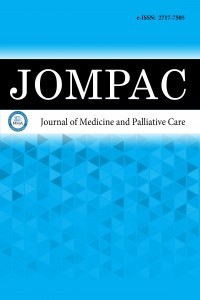1.
Daly AF, Rixhon M, Adam C, Dempegioti A, TichomirowaMA, Beckers A. High prevalence of pituitary adenomas: across-sectional study in the province of Liege, Belgium. J ClinEndocrinol Metab. 2006;91(12):4769-4775.
2.
Ochiai Y, Inoshita N, Iizuka T, et al. Clinicopathological featuresof colorectal polyps and risk of colorectal cancer in acromegaly.Eur J Endocrinol. 2020;182(3):313-318.
3.
Giustina A, Barkan A, Beckers A, et al. A consensus on thediagnosis and treatment of acromegaly comorbidities: an update.J Clin Endocrinol Metab. 2020;105(4):e937-946.
4.
Arlien-Søborg MC, Dal J, Madsen MA, et al. Reversible insulinresistance in muscle and fat unrelated to the metabolic syndromein patients with acromegaly. EBioMedicine. 2022;75;103763.
5.
Ji X, Fu J, Li X, Yuan K, Sun X, Yao Q. Serum biomarkers ofcolonic polyps in patients with acromegaly: a meta-analysis andsystematic review. Pituitary. 2023;26(1):1-8.
6.
Kasuki L, Maia B, Gadelha MR. Acromegaly and colorectalneoplasm: an update. review. Front Endocrinol. 2022;13:924952.
7.
Peng G, Li X, Zhou Y, et al. Clinical characteristics and associatedfactors of colonic polyps in acromegaly. Exp Clin EndocrinolDiabetes. 2022;130(11):714-722.
8.
Ortego J, Vega B, Sampedro J, Escalada J, Boixeda D, Varela C.Neoplastic colonic polyps in acromegaly. Horm Metab Res.1994;26(12):609-610.
9.
Katznelson L, Laws Jr ER, Melmed S, et al. Acromegaly: anendocrine society clinical practice guideline. J Clin EndocrinolMetab. 2014;99(11):3933-3951.
10.
Gordon MB, Nakhle S, Ludlam WH. Patients with acromegalypresenting with colon cancer: a case series. Case Rep Endocrinol.2016;2016:5156295.
11.
Renehan A, O’Dwyer S, Shalet S. Guidelines for colonoscopicscreening in acromegaly are inconsistent with those for otherhigh risk groups. Gut. 2003;52(7):1071-1072.
12.
Kasuki L, Rocha P, Lamback E, Gadelha M. Determinants ofmorbidities and mortality in acromegaly. Arch Endocrinol Metab.2019;63(6):630-637.
13.
Bolfi F, Neves AF, Boguszewski CL, Nunes-Nogueira VS.Mortality in acromegaly decreased in the last decade: a systematicreview and meta-analysis. Eur J Endocrinol. 2019;181(5):L5-L6.
14.
Koksal AR, Ergun M, Boga S, et al. Increased prevalence ofcolorectal polyp in acromegaly patients: a case-control study.Diagn Ther Endosc. 2014;2014:152049.
15.
Yamamoto M, Fukuoka H, Iguchi G, et al. The prevalence andassociated factors of colorectal neoplasms in acromegaly: a singlecenter based study. Pituitary. 2015;18(3):343-351.
16.
Kurimoto M, Fukuda I, Hizuka N, Takano K. The prevalence ofbenign and malignant tumors in patients with acromegaly at asingle institute. Endocr J. 2008;55(1):67-71.
17.
Lois K, Bukowczan J, Perros P, Jones S, Gunn M, James RA.The role of colonoscopic screening in acromegaly revisited:review of current literature and practice guidelines. Pituitary.2015;18(4):568-574.
18.
Renehan AG, Bhaskar P, Painter JE, et al. The prevalence andcharacteristics of colorectal neoplasia in acromegaly. J ClinEndocrinol Metab. 2000;85(9):3417-3424.
19.
Ochiai Y, Inoshita N, Iizuka T, et al. Clinicopathological featuresof colorectal polyps and risk of colorectal cancer in acromegaly.Eur J Endocrinol. 2020;182(3):313-318.
20.
Wassenaar M, Cazemier M, Biermasz N, et al. Acromegaly isassociated with an increased prevalence of colonic diverticula: acase-control study. J Clin Endocrinol Metab. 2010;95(5):2073-2079.
21.
Veysey M, Thomas L, Mallet A, et al. Prolonged large boweltransit increases serum deoxycholic acid: a risk factor foroctreotide induced gallstones. Gut. 1999;44(5):675-681.
22.
Jensen EA, Young JA, Kuhn J, et al. Growth hormone alters grossanatomy and morphology of the small and large intestines in age-and sex-dependent manners. Pituitary. 2022;25(1):116-130.

